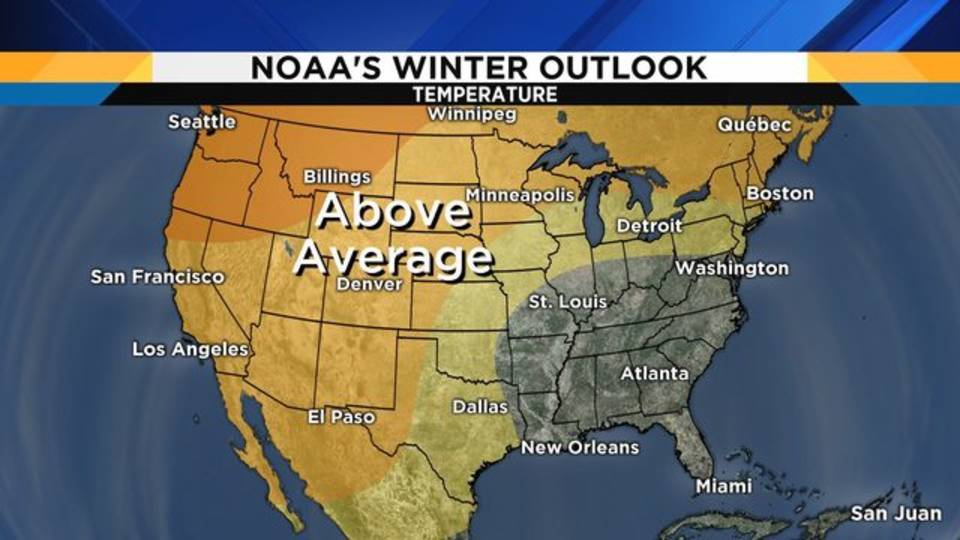In an El Niño winter, two things happen: The main Arctic jet stream tends to shift farther north, which limits Arctic air intrusions into our region.
The farther north storm track sometimes gives us a drier than normal winter. El Niños also strengthen the subtropical jet stream, which creates a more persistent storm track across the south, and gives them a cooler, rainier winter in general.
In a La Niña winter, the Arctic jet stream trends farther south, allowing more Arctic blasts into the Great Lakes. If the storm track is near us, that means more snow storms. Farther south, the subtropical jet stream is almost non-existent, so they have a drier, sunnier, more pleasant winter. If you’re a snowbird, you like La Niña winters.
As you can see, the NOAA winter outlook calls for above average temperatures for us, and below average precipitation.
But there are some important caveats. First, remember that these are averages for the entire winter, and we don’t necessarily know how that distribution of temperature and precipitation will play out.

https://www.clickondetroit.com/weather/2018-19-winter-weather-outlook-not-as-harsh
No comments:
Post a Comment